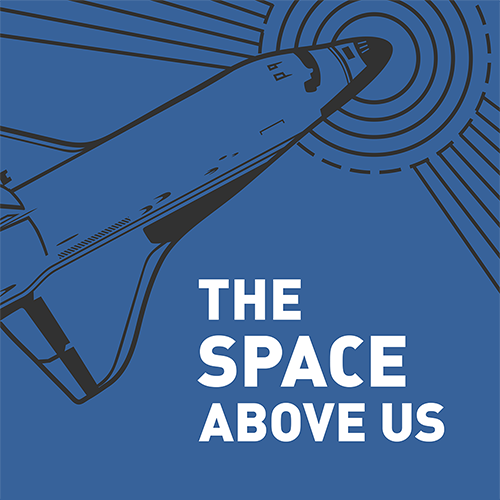Episode 189: STS-92 - Over and Under (ISS 3A: Z1 and PMA-3)
Table of Contents
After a long wait for the crew (and audience!) STS-92 is finally here. We’ll be delivering the heart of the ISS external structure, the Z1 truss, as well as a new docking port, PMA-3. Along the way we’ll learn a bit about the folks on the ground who make this all possible, walk through four complicated EVAs, see something no one’s seen since 1967, and put our plumber’s hats on.
Episode Audio #
Photos #

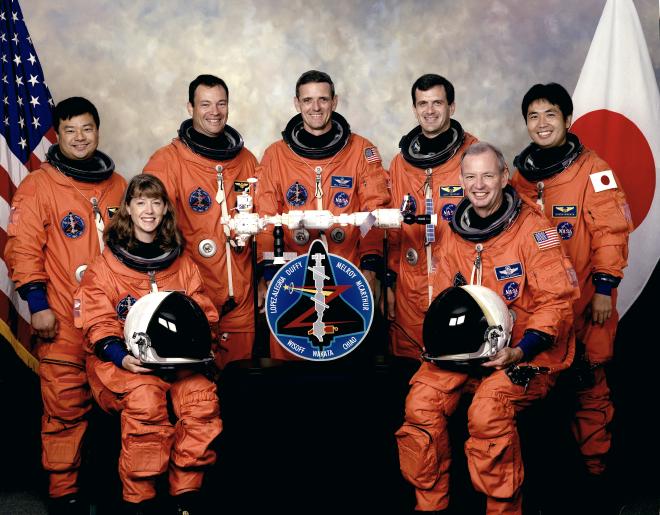
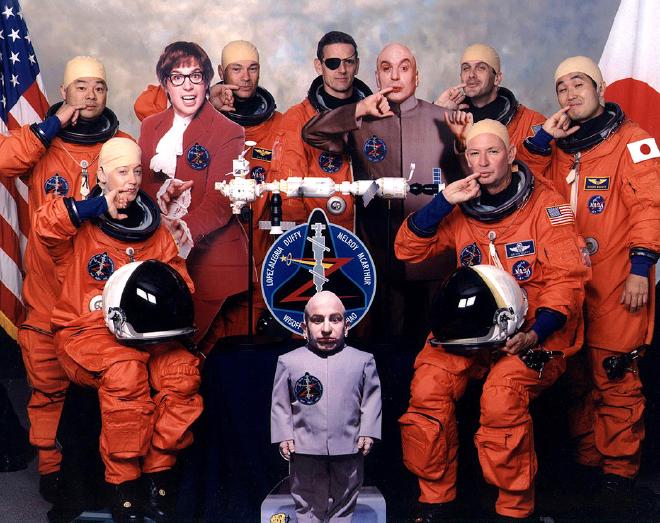
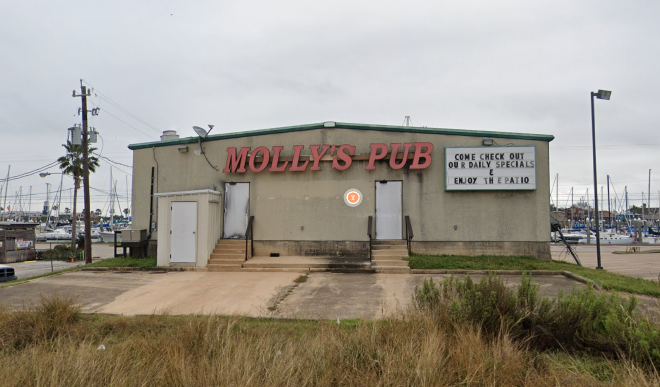
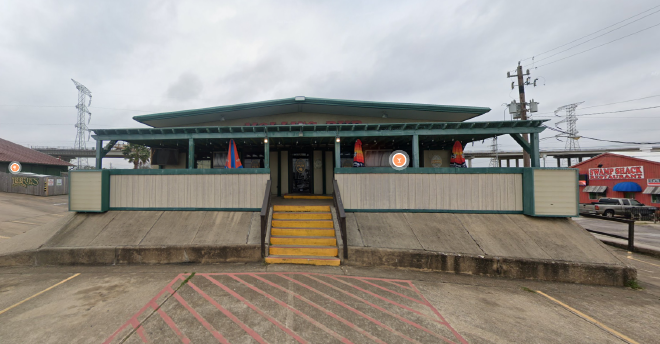
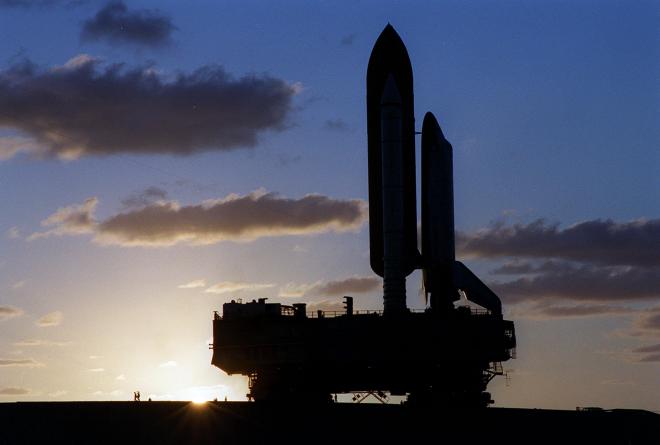
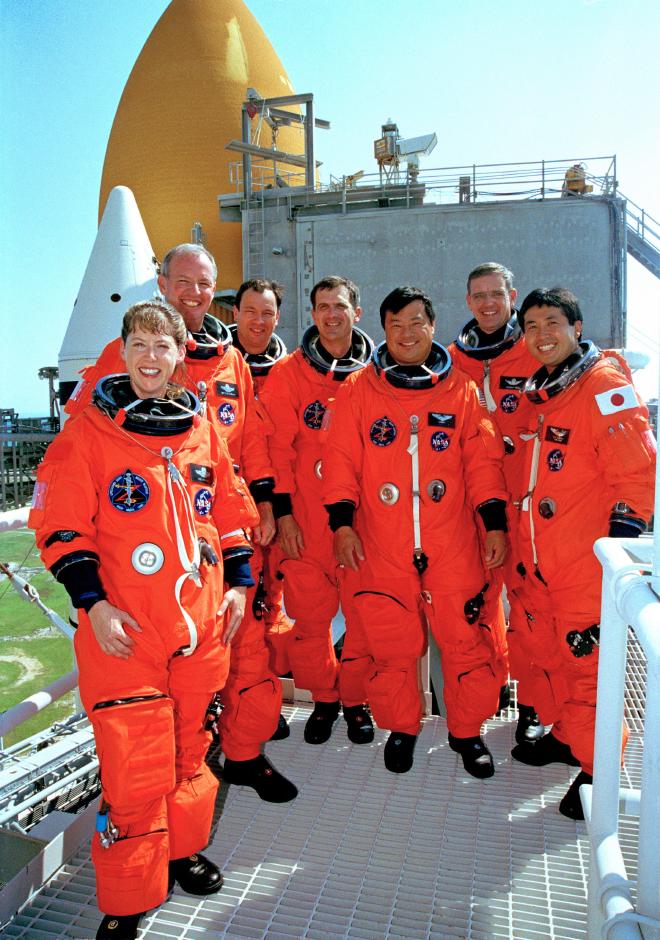
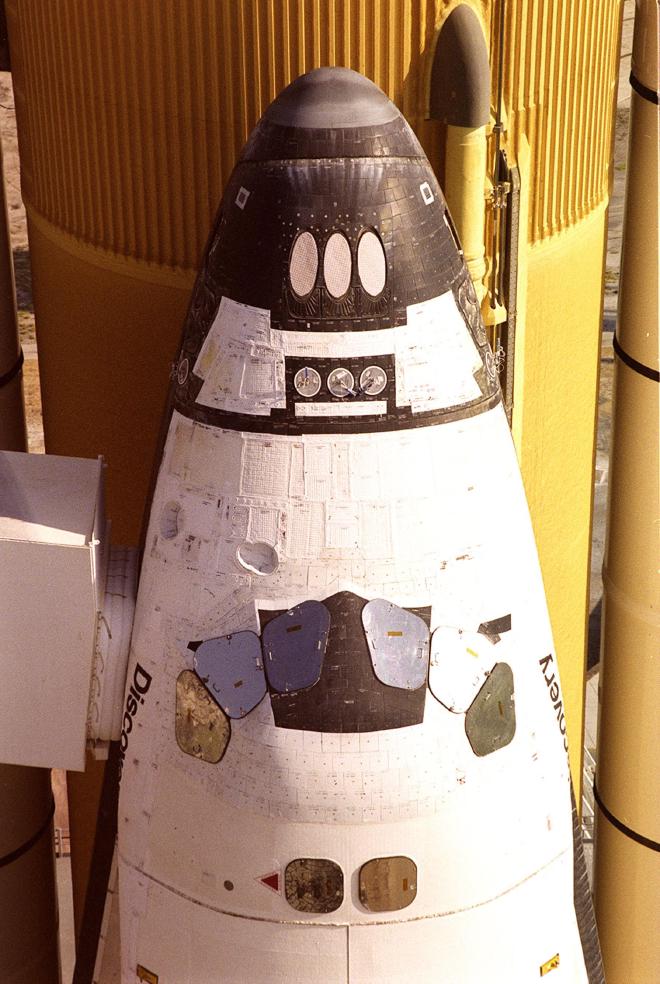
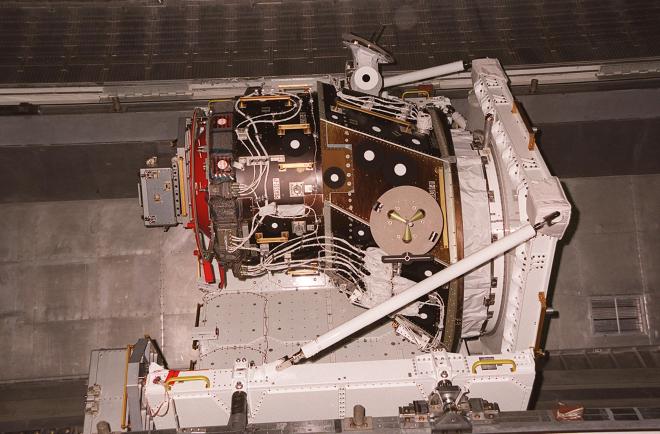
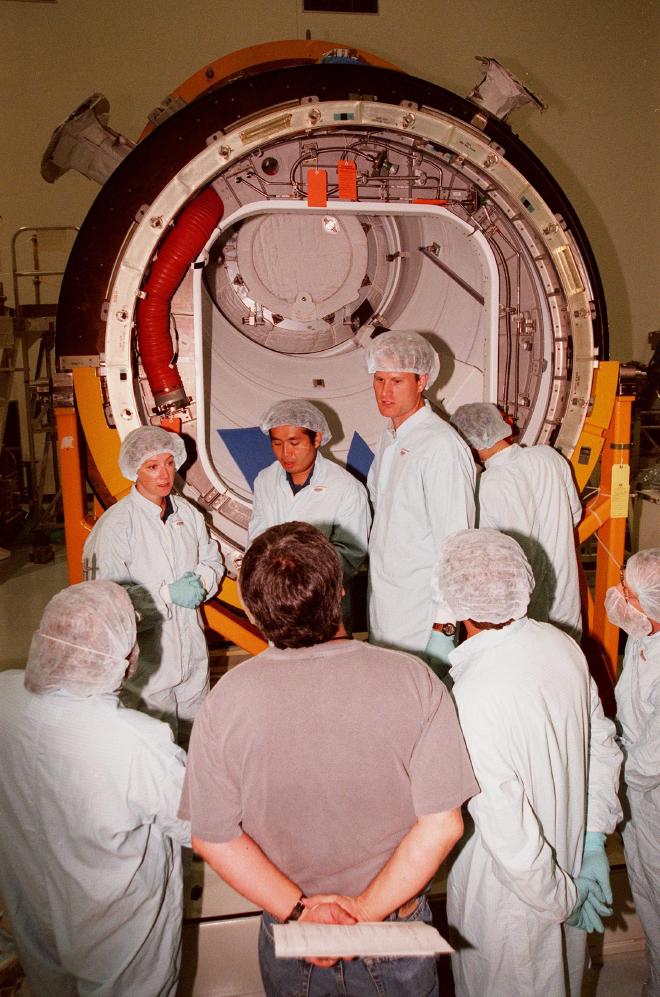
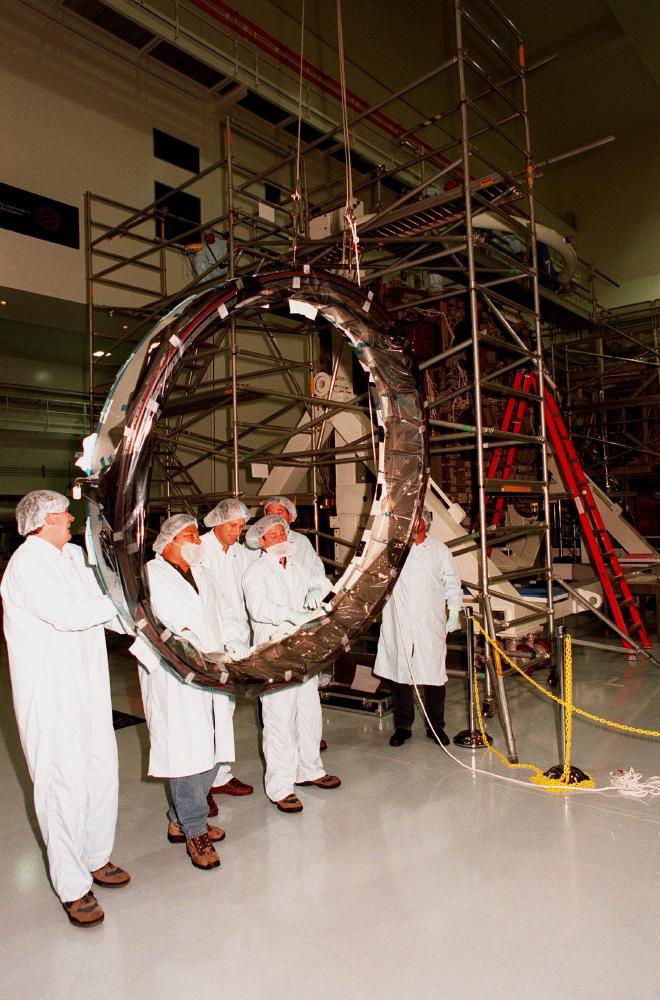
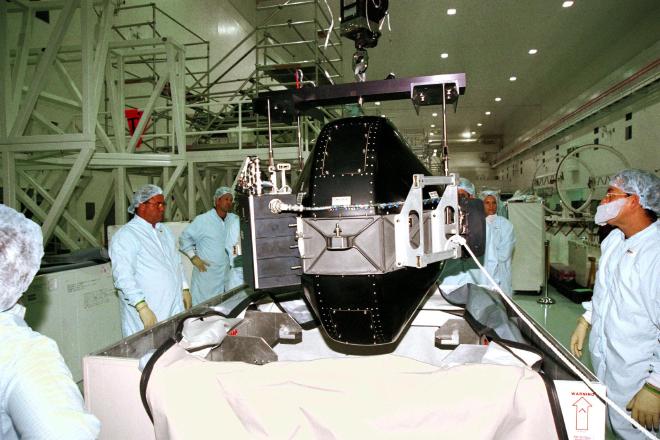
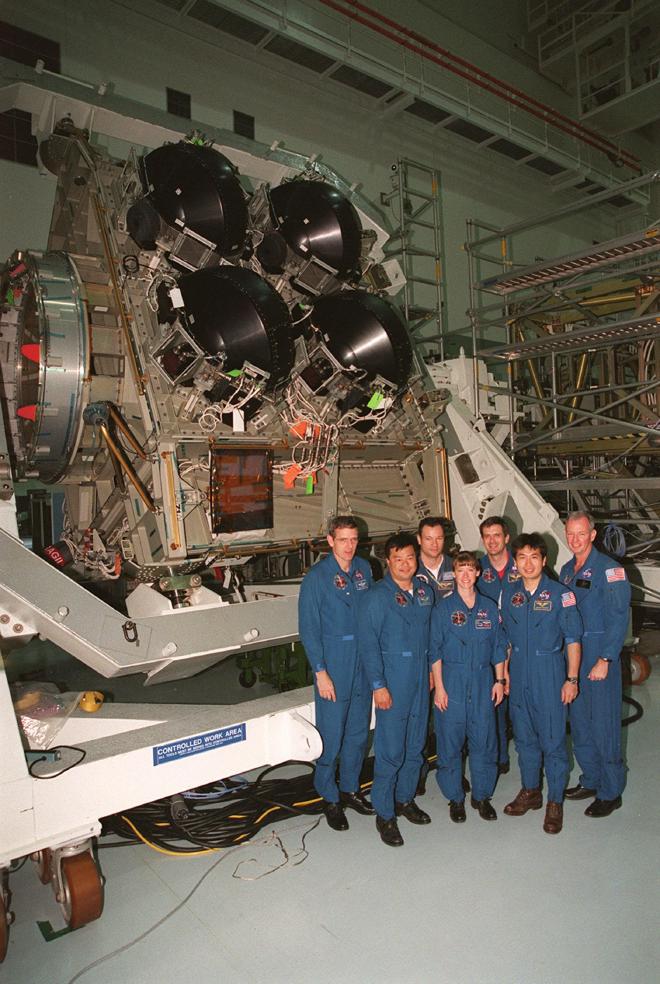
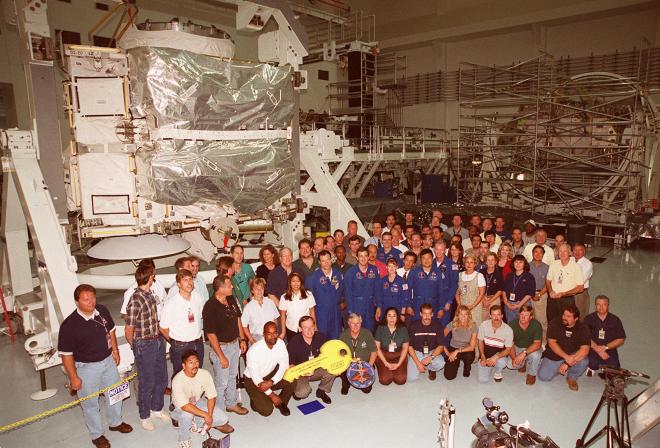
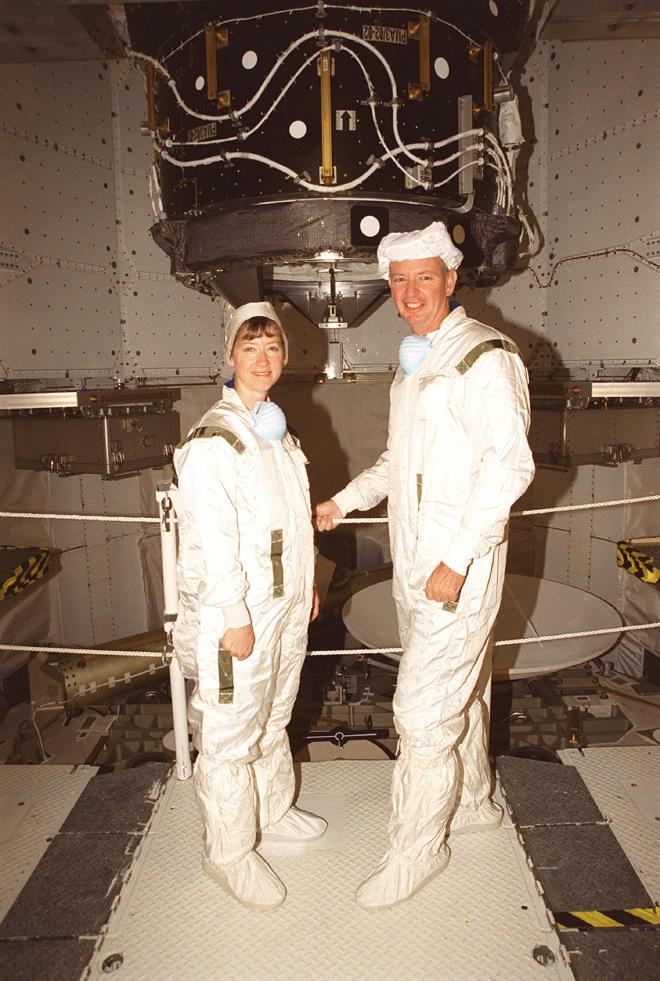
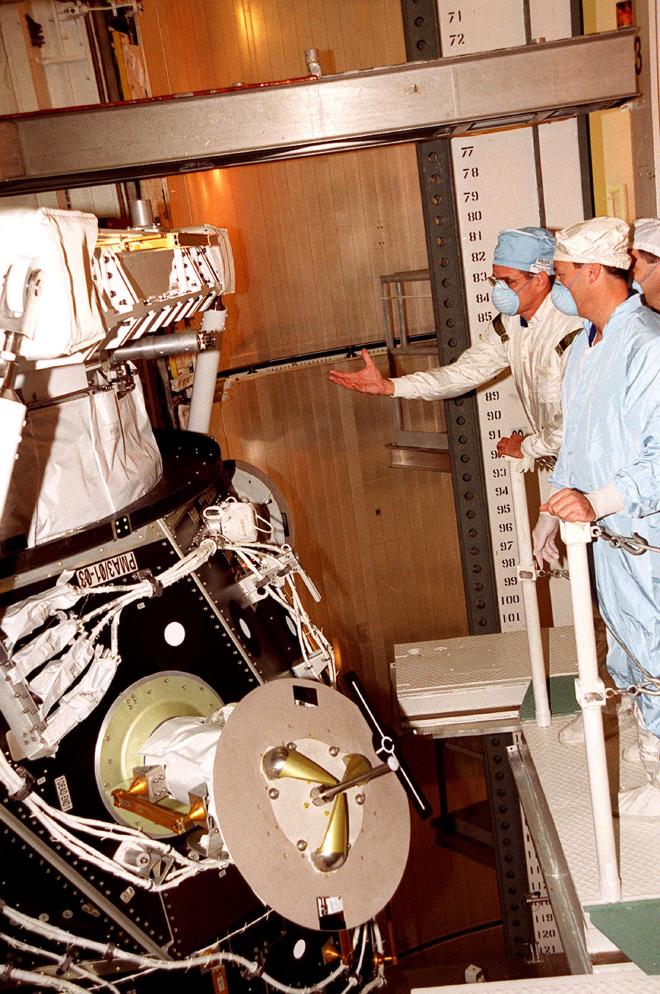
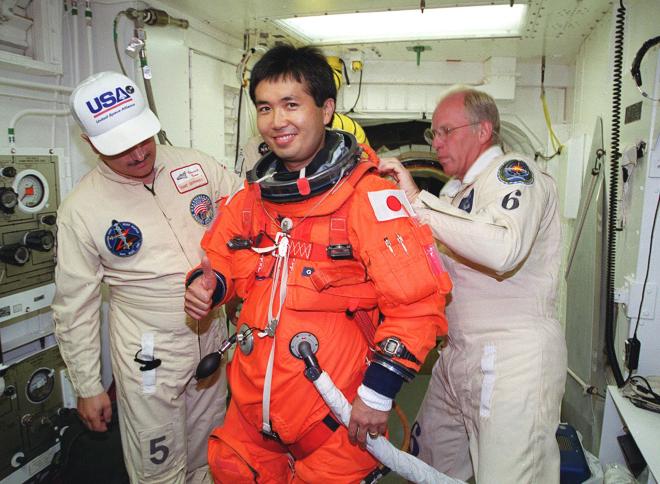
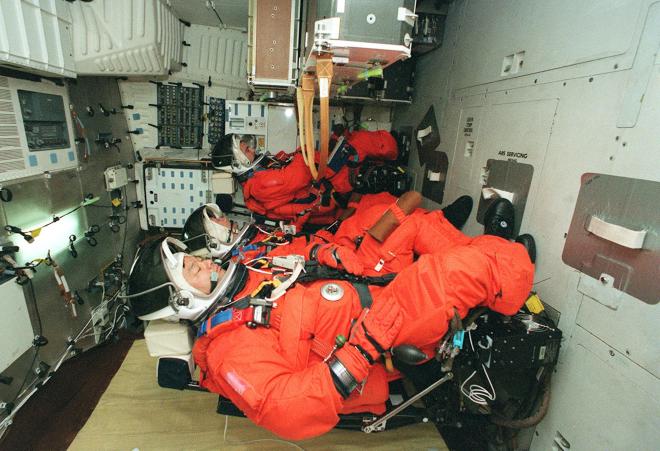
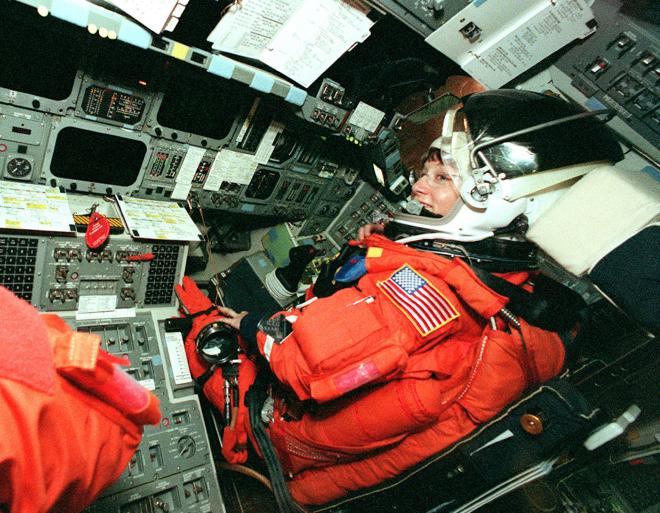
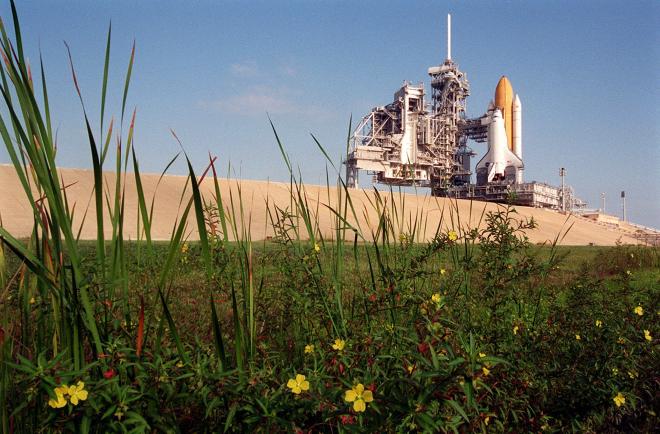
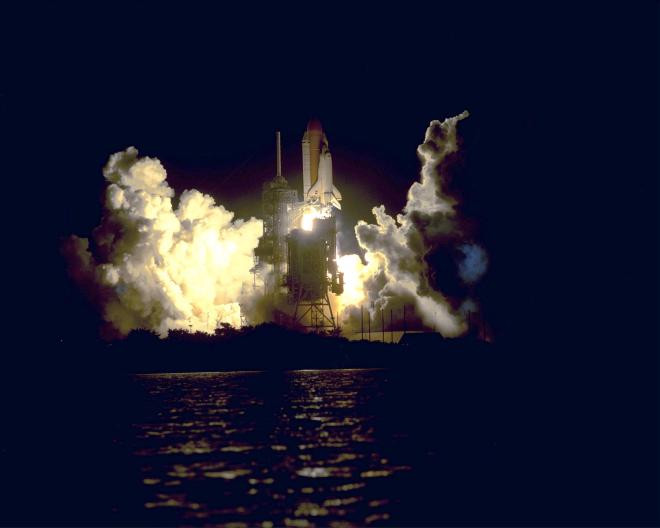
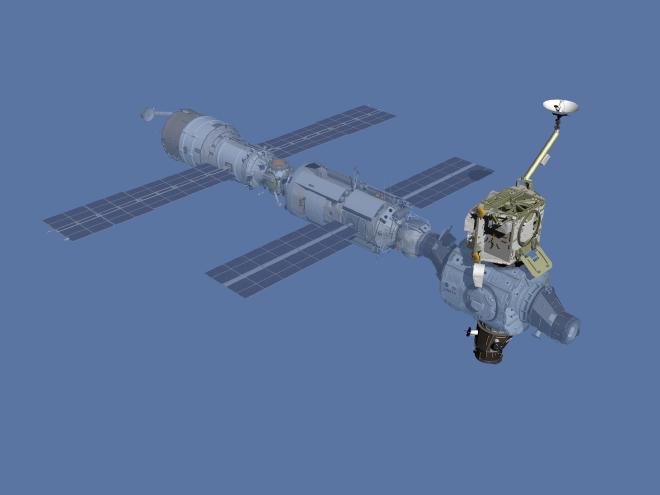
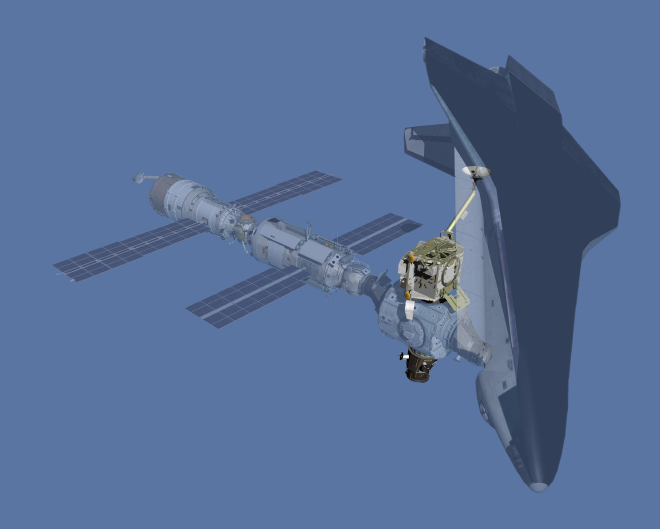
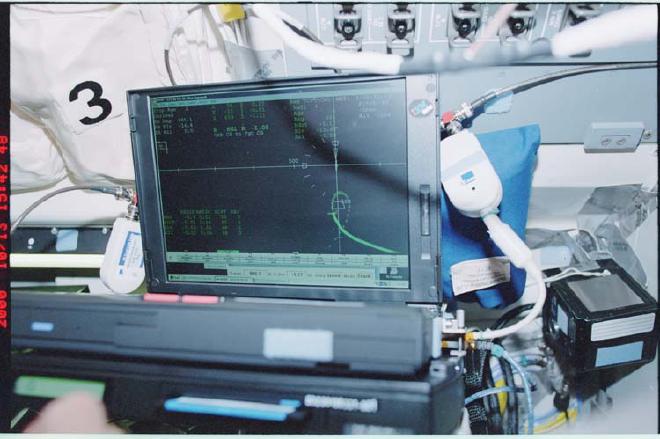
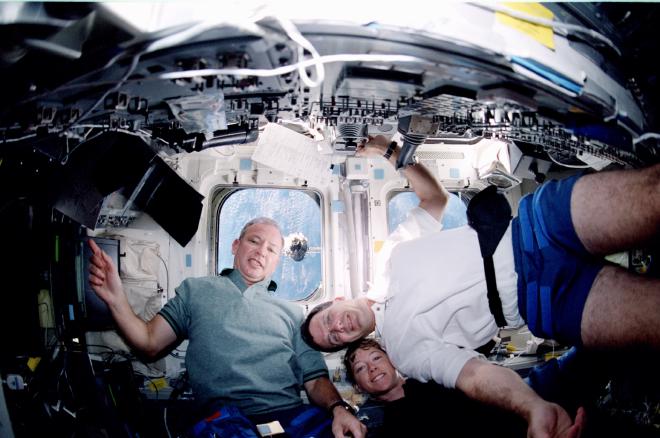
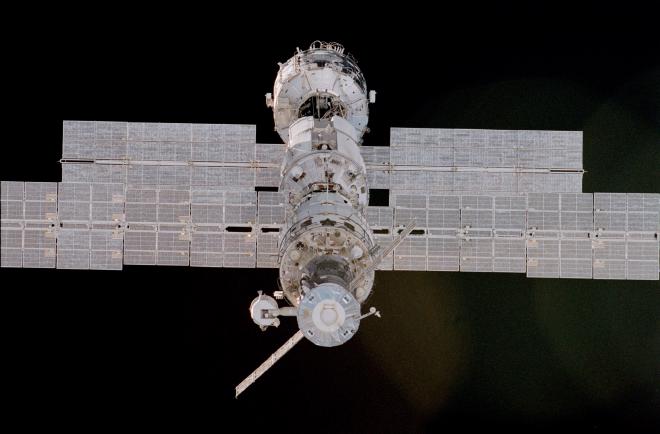
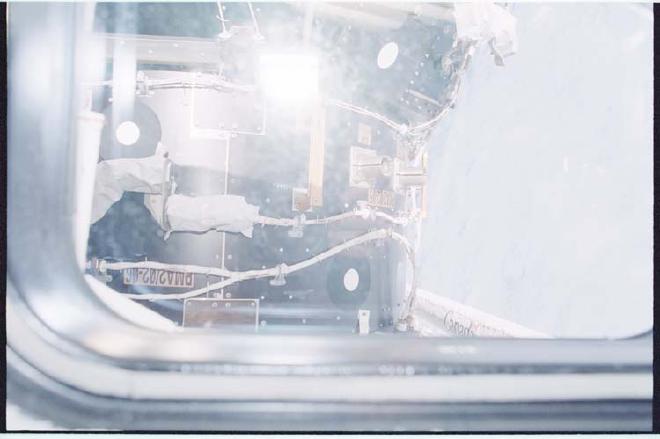
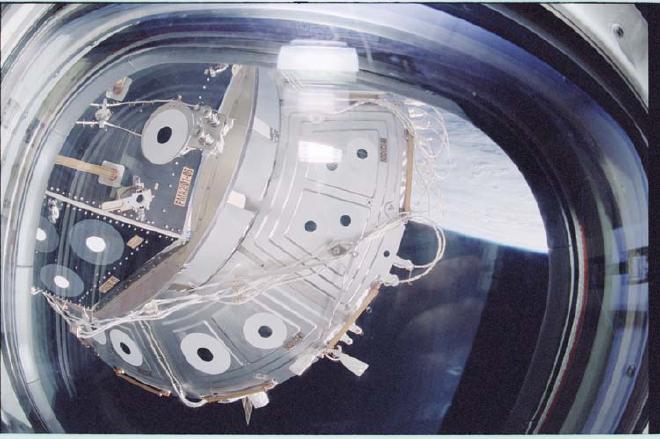
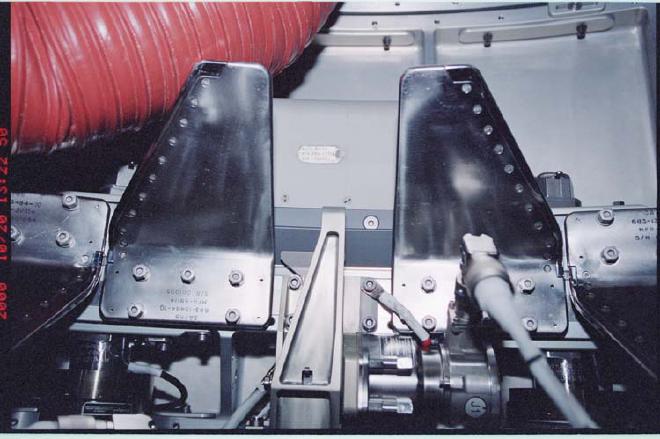
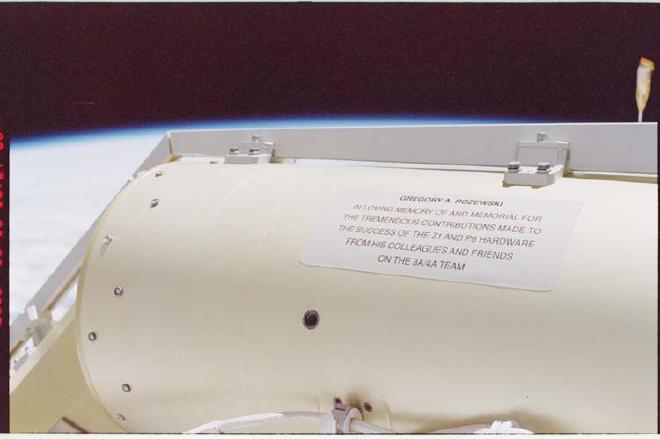

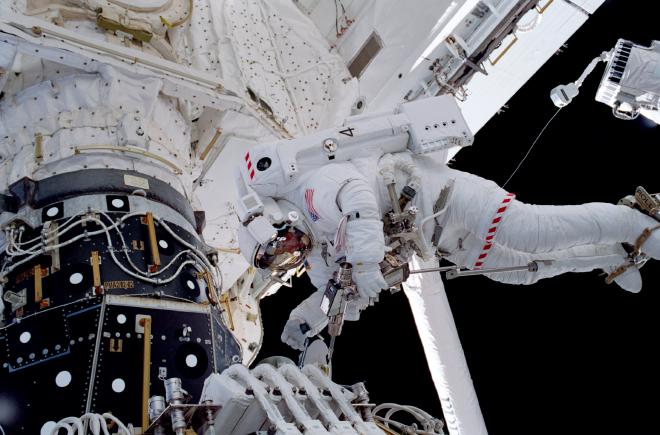
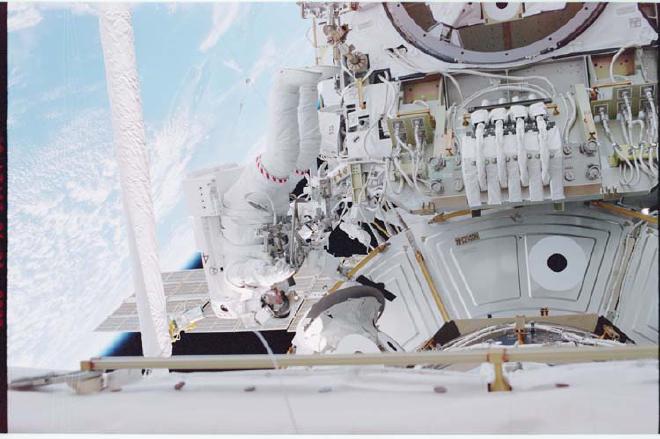
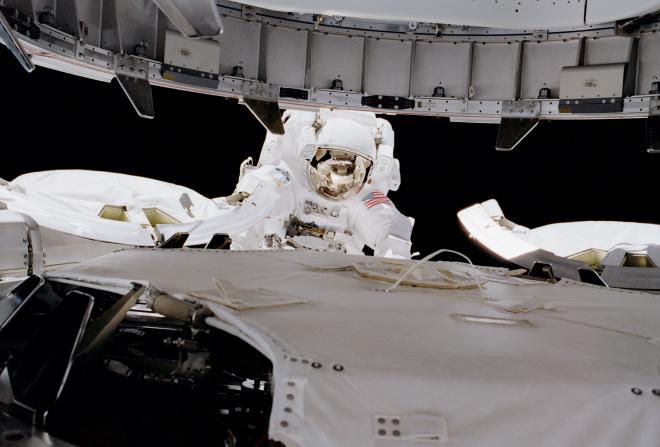
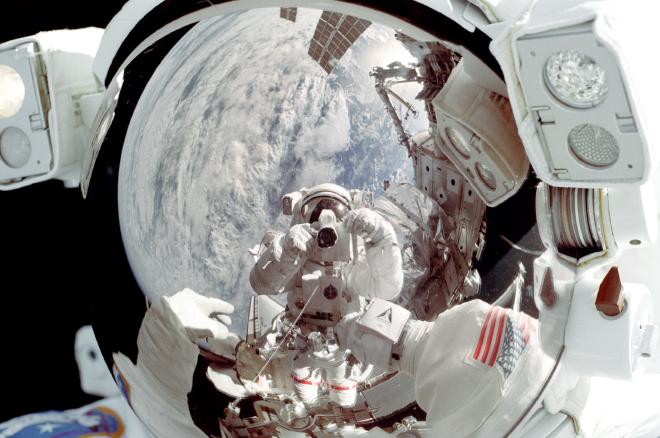
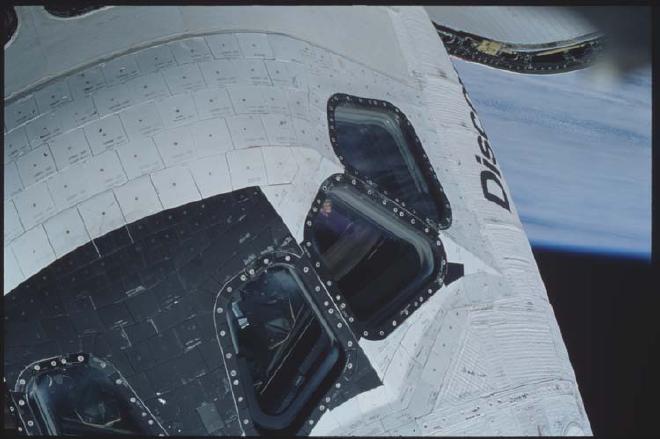
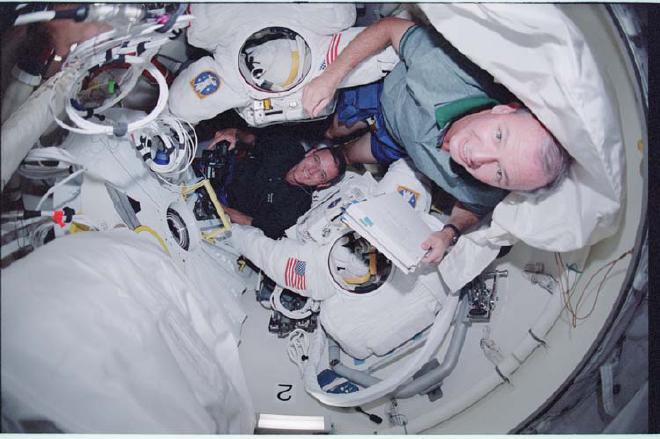
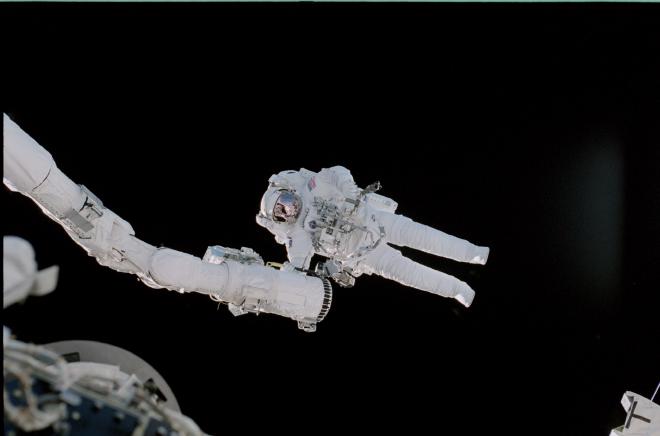
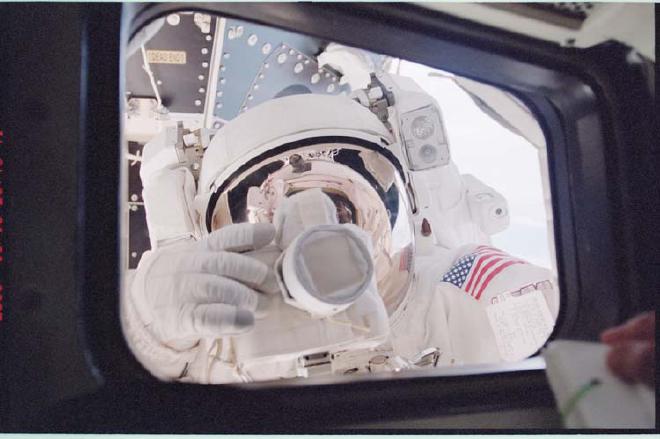
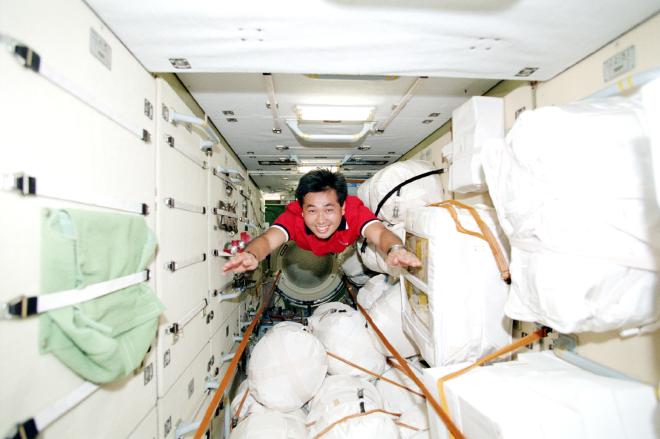
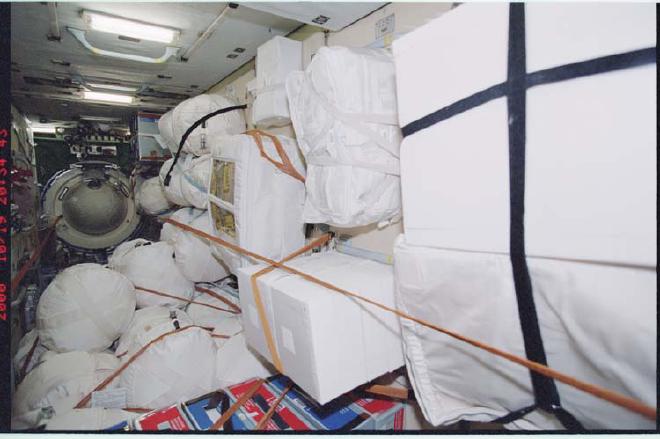
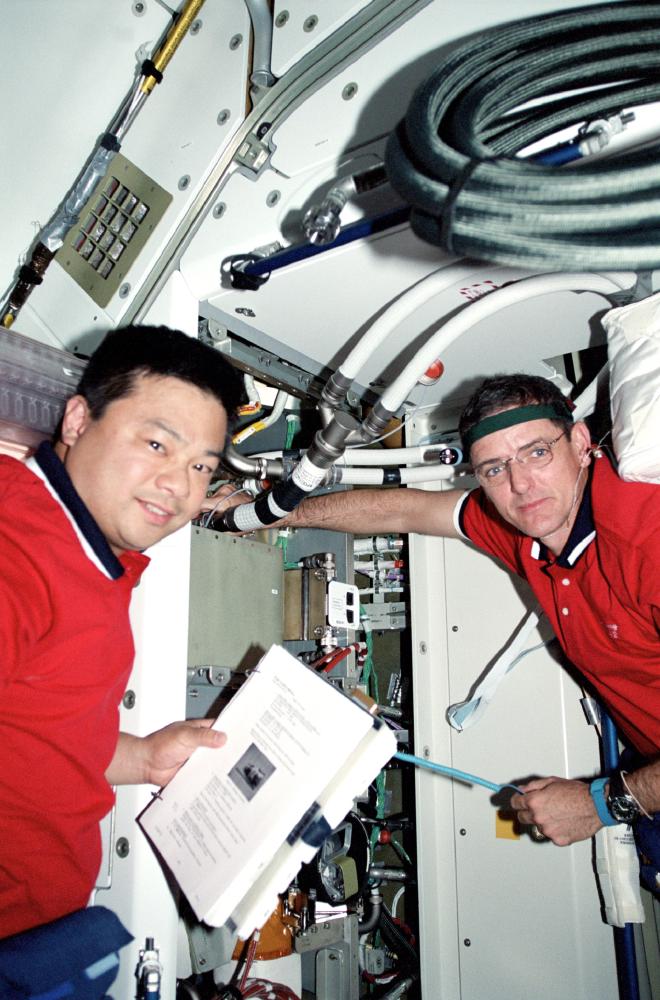
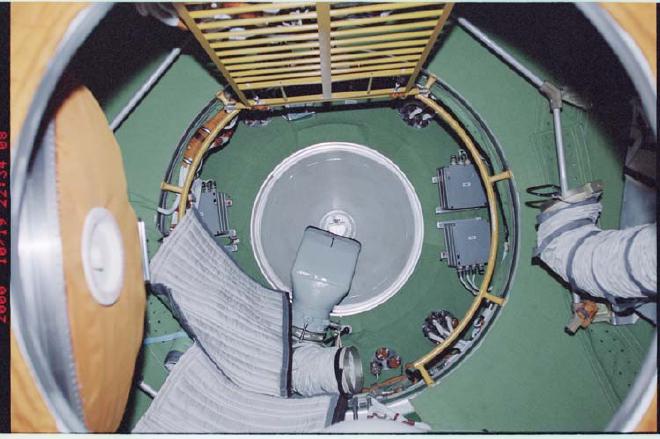
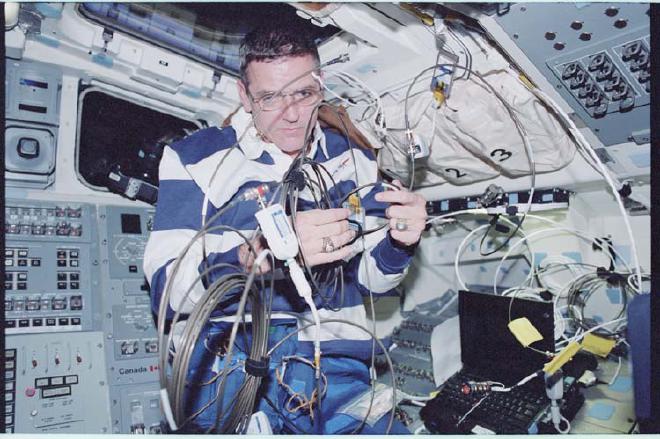
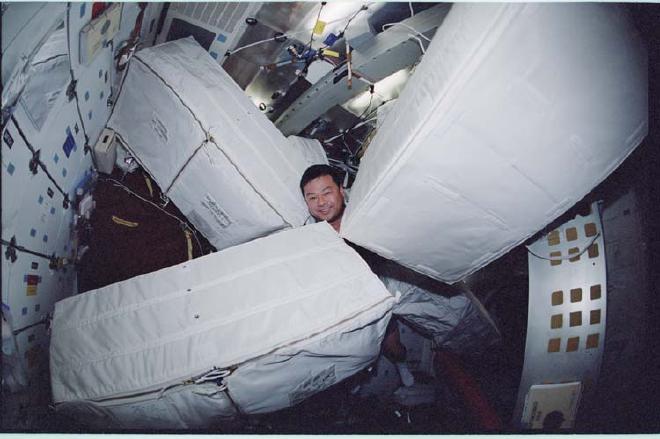
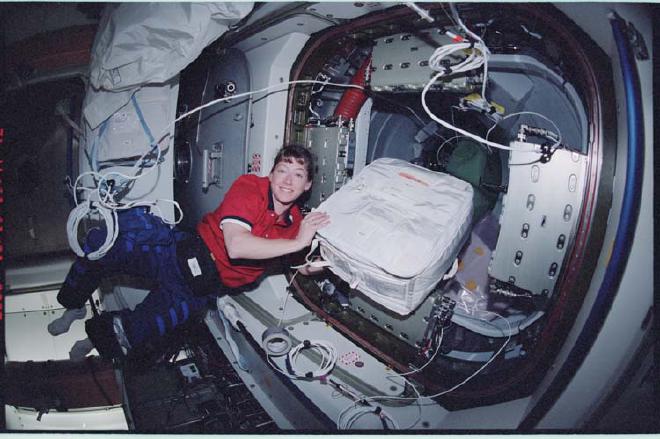
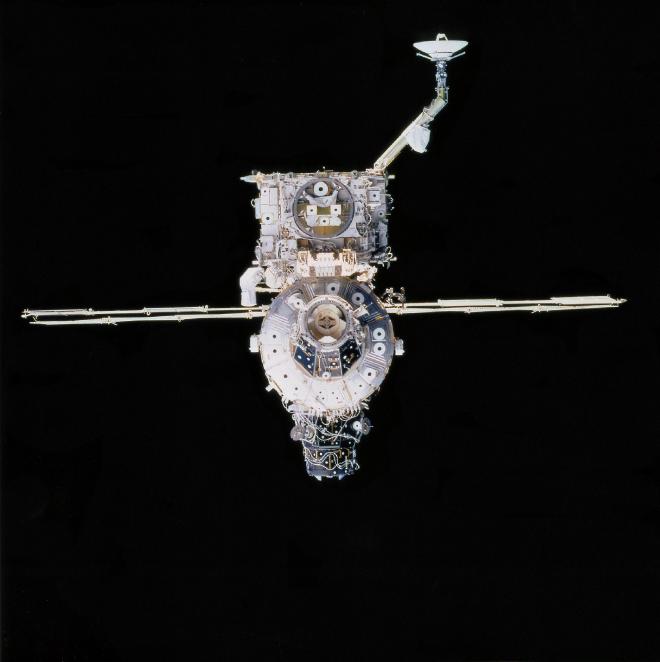
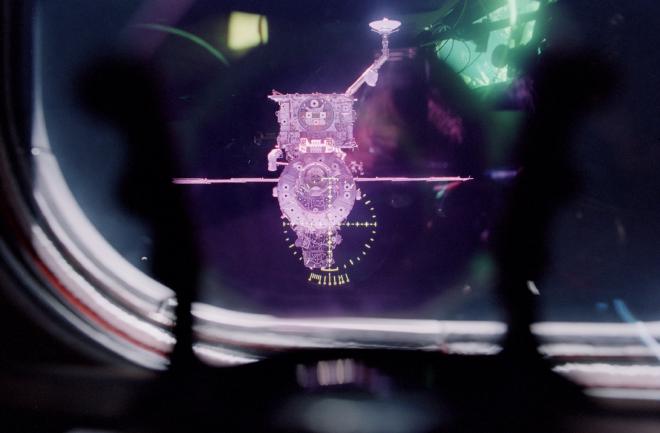
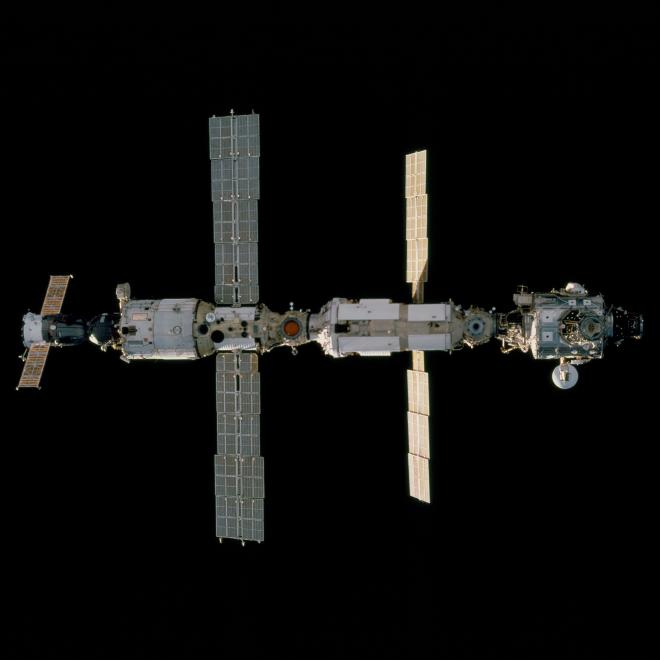
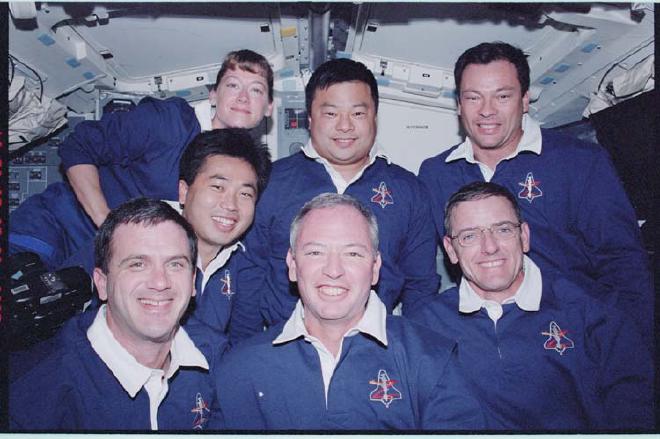
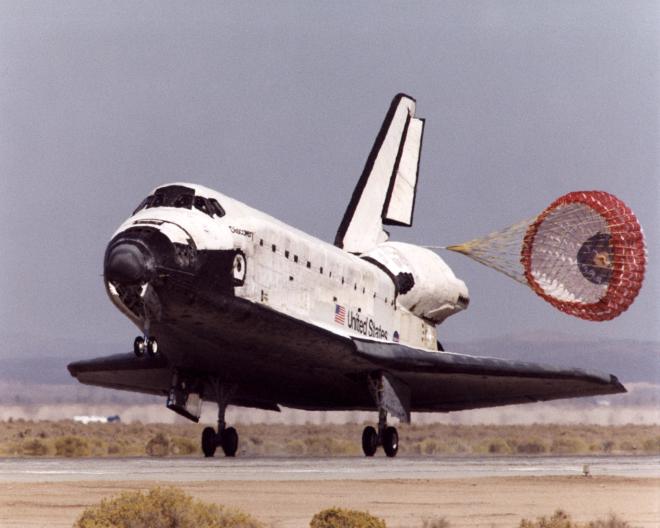
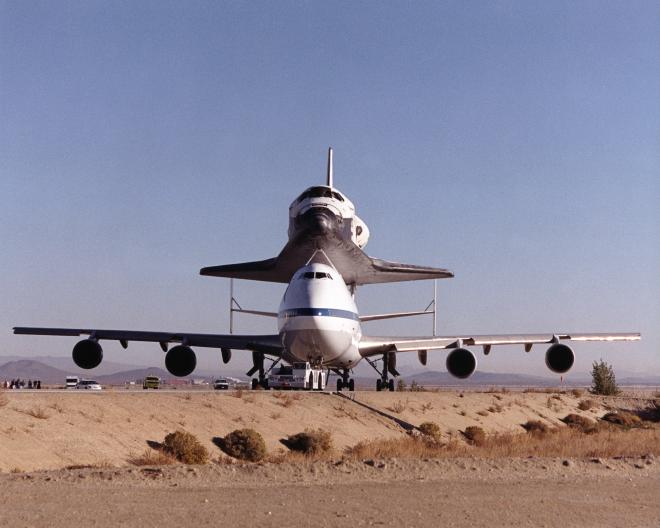
For more photos, head over to our friends at Wikiarchives.space: https://wikiarchives.space/index.php?/category/628
Post-Flight Presentation #
To see the mission in motion, check out the post-flight presentation!
Click here for full video details.
Pamela Melroy Oral History #
Whether you want to read about the struggles of being a female military pilot or the hazards of weightless toilet repair, Pam Melroy has us covered in this delightful oral history interview: https://historycollection.jsc.nasa.gov/JSCHistoryPortal/history/oral_histories/MelroyPA/MelroyPA_11-16-11.htm
Transcript #
NOTE: This transcript was made by me just copying and pasting the script that I read to make the podcast. I often tweak the phrasing on the fly and then forget to update the script, so this is not guaranteed to align perfectly with the episode audio, but it should be pretty close. Also, since these are really only intended to be read by myself, I might use some funky punctuation to help remind myself how I want a sentence to flow, so don’t look to these as a grammar reference. If you notice any egregious transcription errors or notes to myself that I neglected to remove, feel free to let me know and I’ll fix it.
Hello, and welcome to The Space Above Us. Episode 189, Space Shuttle flight 100, STS-92: Over and Under
Before we get started today I just wanted to quickly address the elephant in the room (or at least it feels that way to me): the schedule. I try to avoid putting contemporary production details into the show like this since people listen to these episodes years later when notes like this are no longer relevant but I couldn’t help myself this time. This episode took a really long time to come out and I wanted to apologize for that. Yes, people have written in, reminding me that this is a hobby and I’m under no obligation to meet any schedule, but still. I’ve been on the other side of the microphone when a podcast began to fade away and I know it’s no fun.
So first, I’ll just say this: The Space Above Us is not fading away. Second, I am still working on getting back to the two week schedule, but it’s tough once the rhythm is broken. And third, this doesn’t explain the entire delay, but part of the problem is now that the two week deadline has lost some of its power, I’ve allowed myself to do more research on each episode. For this mission I ended up logging 50% more time than an average entire episode before I even started writing the script. So really, that’s just reminding me that the deadline was my ally. It forced me to do quality research without getting completely bogged down like I did on this episode.
Anyway, this message itself is sort of becoming an additional delay to the episode so I’ll wrap it up. Just know that the show isn’t in any sort of danger and that I’m still working on cranking out content of the quality you all deserve, hopefully closer to every other week.
And since I’m already disrupting the regular flow of the episode, I’m going to quickly insert a minor correction here. Unfortunately, it’s kind of an embarrassing one. As we are all aware, Space Shuttle crews are made up of a Commander, Pilot, and then a mixture of Mission Specialists and Payload Specialists. Since there was only one Commander and only one Pilot they didn’t need any numbers, but everyone else got a number. For example, STS-58 Mission Specialist 4 Shannon Lucid, or (just so I can say his name again), STS-61A Payload Specialist 2 Wubbo Ockels.
I bring this up because for a few recent missions, I’ve gotten some of these numbers wrong. For example, on STS-88, Mission Specialist 1 was Nancy Currie, not Jerry Ross, on STS-80, Mission Specialist 1 was Tammy Jernigan, not Story Musgrave, and there a few others like that. I’m planning on going back to add an explanation to the transcripts and add an errata note to the episode descriptions, but won’t be updating the audio. The reason is that other than Mission Specialist 2, who serves as the Flight Engineer, these numbers don’t really mean anything, other than a general guide as to where they might sit in the cabin. But still, even if it might not really mean a ton, everyone does have an assigned position on the flight and I like to get the little details right.
I say this is an embarrassing error because of why I got them wrong. I basically use Wikipedia for only two things: exploring the handy list of cited documents related to a mission, and as an easy reference of who flew on what missions when. Well, it turns out that some time in 2015 an anonymous Wikipedia user went through and rearranged the crews on several flights. From what I can tell, they seem to have been ordering them by how they’re listed in the caption of their crew photograph, which is just arbitrary. So the upshot of this is that I should have dug through the press kit and double checked, but since it seemed like a simple and minor detail I relied on the Wiki articles and got bit. I regret the error. And it’s a good reminder to all of you that while Wikipedia is an excellent source of information, if you really want to be sure, double check what you read. And yes, as I fix these mix-ups in my podcast episodes, I’ll also be fixing them on Wikipedia.
Aaanyway, that’s a lot of preamble and you’ve all waited to hear about STS-92 for long enough, so let’s get into it, and hopefully it’ll have been worth the wait.
Last time, we flew along on ISS mission 2A.2b, better known as STS-106. We finally met Zvezda, the Russian service module, moved a bunch of equipment, spent some time outside, and gave a plug to Pizza Hut 20 years after they did something cool. On today’s mission we won’t talk about pizza at all, but we will talk about the first American additions to the ISS since the launch of Unity nearly two years earlier.
Today’s flight is the long awaited third assembly mission of the International Space Station. The mission was intended to fly years ago at this point, but delays with the Russian service module Zvezda forced NASA to kick the STS-92 can down the road. And as we saw, the delay got long enough that several intermediate missions were added in between 2A and 3A, giving us 2A.1, 2A.2a, and 2A.2b. STS-92 mission specialist Bill McArthur joked that as the crew waited for their chance to fly they called these missions the “terrible twos”.
But Zvezda is here now, the bottleneck is resolved, and now we’re going to see a flurry of activity up at the ISS. On today’s flight we’ll be focusing less on transferring equipment and supplies and more on augmenting the capability of the station itself, with the addition of the Z1 Truss and Pressurized Mating Adapter 3, which will be placed on the top and bottom of the station, hence the episode’s title.
And while the bottleneck is resolved for now, Mission Specialist Jeff Wisoff points out that it is always a looming threat. He said “On past shuttle flights we used to fly individual payloads, and if something went wrong, you just brought the payload back, fixed it, and flew it again later. Now, with the space station assembly, we have this long string of flights where every flight depends on the one in front of it. So you feel a lot of pressure - you don’t want to be the one who holds up the assembly line. There are only so many things you can do to deal with contingencies on orbit. If you get a bolt that is really stuck, and you don’t have a tool to saw it off or something, you could end up holding up the line. There’s always this holding your breath that every part of the assembly is going to work.” Just to add to that, I think it’s pretty interesting that Wisoff would view an assembly problem that couldn’t be solved with the tools made available as a failure of the crew. It really gives you some insight into the mindset of the astronauts.
And speaking of the crew, we’ve already heard from two of them, so let’s meet the whole gang.
Commanding this mission is Brian Duffy. Like all Commanders, Duffy is a familiar face, most recently flying as Commander of STS-72, which retrieved the Japanese satellite “Space Flyer Unit” in 1996. Since this is Duffy’s fourth and final flight I wanted to share some thoughts on his leadership style from the mission’s Pilot, who we’ll be meeting in a moment. She said that with some people you look at their leadership style and think “wow, what a good leader.” But with Duffy, he would subtly finesse the crew such that everyone seemed to have the right idea on their own in the first place. The result was that his influence faded into the background, and instead of the crew remarking on his good leadership, they would end up thinking “aren’t we a great team?” It’s an interesting insight and surely the sign of a skilled leader. And I’m sure Duffy brought that to whatever challenges came next.
Eagle-eared listeners may have picked up on the pronoun in that previous section, and yes, today’s pilot is the third, and sadly last, of the female Shuttle pilots: Pam Melroy. Pamela Melroy was born on September 17th, 1961 in Palo Alto, California. Eight years later, she watched the live TV coverage of Apollo 11 landing on the moon and decided at that moment to become an astronaut. Since at the time all astronauts were military test pilots, she planned her whole life around becoming a military test pilot, despite the fact that at the time women were not allowed to become military test pilots. As she tells it, she benefited from lucky timing, with doors opening shortly before she arrived at them. Notably, the Air Force began allowing women pilots in the mid-1970s and she started pilot training in the mid-1980s, by which time women had moved up into middle management, reducing the friction on her career. I should also mention that just before starting that pilot training, she earned a Bachelor’s degree in Physics and Astronomy from Wellesley College, and a Master’s in Earth and Planetary Sciences from MIT. She then joined the Air Force, where she would eventually attain the rank of Colonel. But first, she flew the KC-10 for six years, and flew in Operation Just Cause, Operation Desert Shield, and Operation Desert Storm before graduating from the Air Force Test Pilot school at Edwards Air Force Base. Sure enough, with her goal of becoming a military test pilot achieved, NASA came calling in 1994. This is her first of three missions.
Before continuing with the crew, I wanted to share a couple short anecdotes from Melroy’s oral history interview that highlighted that while women were now indeed flying the Space Shuttle, full equality hadn’t quite yet been achieved. She mentions how on several occasions she would interact with ground support folks on her way to or from flying a NASA jet, and they would make some passing comment about a broken jet or coming in late the other night. The comment would puzzle Melroy until she realized that the maintenance guy had confused her with one of the other two women pilots. In their mind there was just one of them. Eileen Collins and Susan Still reported similar interactions, with Still joking “I didn’t have the brain that day. I gave it to one of the other two bodies.”
But to balance out that less-than-inspiring anecdote, Melroy also talked about how while she suffered with credibility issues and skepticism in the military, she didn’t encounter any of that in the astronaut office. She attributed part of that to astronauts being very smart people, who quickly sized her up, realized she would be a Commander one day, and thus potentially their bosses. Always a good idea to be nice to the boss.
Throwing off the usual seating, we next head down to the middeck and find Mission Specialist 1, who was not Koichi Wakata, anonymous Wikipedia editor, but rather Leroy Chiao. When we last saw Chiao, he was flying on STS-72 with Commander Duffy. But for much of the time since that mission, he’s been working on STS-92. In a pre-flight interview he said he had been involved in development as an EVA lead for three years, following it even before being formally assigned to the flight. Once we get to the complex EVA choreography later in the episode, you’ll see why. This is Chiao’s third of four flights.
Moving back up to the center of the flight deck, we find Mission Specialist 2, Bill McArthur. When we last saw McArthur, he was helping to deliver the Docking Module to Mir on STS-74, which means he is in the exclusive club of spacefarers who have visited two space stations. One thing I like about McArthur is that he likes to talk, sitting for a whopping nine oral history interviews, some of which provided extra details for this episode. This is this third of four flights.
Moving back down to the middeck, we find another member the two-space-station club: Mission Specialist 3, Jeff Wisoff. When we last saw Wisoff it was on STS-81, retrieving a grateful John Blaha from Mir and delivering Jerry Linenger, who didn’t yet know what he was in for. This is Wisoff’s fourth and final flight.
Mission Specialist 4, Michael López-Alegría, spent the entirety of his previous mission cooped up inside Spacelab on STS-73, the second US Microgravity Laboratory mission, and now he’s making the ride to space cooped up on the nearly windowless middeck. So I’m sure he’s grateful that on this flight he’ll have the opportunity to head outside and stretch his legs on two EVAs. This is his second of three flights on the Shuttle, but he’ll also go on to fly on a Soyuz to the ISS, and fly the SpaceX Dragon twice for missions with Axiom Space, where he is still active at the time of this recording.
Last but not least, for Mission Specialist 5, we again head back up to the aft starboard flight deck next to Bill McArthur, where we find Koichi Wakata. Wakata’s previous flight was.. STS-72! That means that with Duffy, Chiao, and Wakata, three out of the seven members of this crew just flew together on their previous missions! This is Wakata’s second of three launches on the Shuttle, but like López-Alegría, he’s still active. A little under two years before this recording he flew on SpaceX Crew 5 to the ISS as part of Expedition 68. Then, I guess deciding that five spaceflights wasn’t enough, he retired from JAXA to join López-Alegría over at Axiom Space. I kind of like how Axiom Space is just becoming an old astronaut clubhouse.
Whether it was the long wait time before launch, or just this particular mix of personalities, this crew grew to become really close friends. In an oral history interview, Pam Melroy talked about how the crew would frequently wrap up long training days with a visit to nearby Molly’s Pub. Shortly after their mission, the pub added a roof to the outdoor picnic tables the crew preferred to sit at, and they joked “ooh, STS-92 must have paid for that.” Molly’s Pub has apparently closed down in the intervening years, but I did find pictures of the patio on Google Maps and will add them to the show notes page if you’re curious. Though I have to admit that “photos of a patio roof where some astronauts used to eat lunch” is pretty far down the rabbit hole even for me.
Melroy said that this socializing was helpful because it gave the crew a place to talk through things that had not gone well in training in a more relaxed environment. The crew also enjoyed watching movies together, including The Princess Bride, Monty Python’s The Life of Brian, and the Austin Powers films, which were coming out at the time. They even called themselves “The Evil Crew”, going so far as to use the T-38 jet call signs “Evil Flight 1, 2, 3, 4”, posing for a group photo where they imitated Dr. Evil, and coming up with nicknames for the crew. Brian Duffy ended up with the name “the Messiah” thanks to The Life of Brian, which I’m sure NASA was glad to keep out of any official material. Pam Melroy ended up as “Peabo” but I’m not sure that’s actually from a movie. Leroy Chiao was dubbed “Dr. Evil” with no explanation as to why. Bill McArthur, who was Mission Specialist 2 and EV2 was dubbed “Number Two” after Robert Wagner’s character in Austin Powers. Jeff Wisoff dodged movie nicknames and got the name “Bulldog” for being tenacious with details, though that did make me double check if he was on a “Dog Crew”, no such luck. Michael López-Alegría kept his existing nickname of L-A since they couldn’t improve on it. And poor Koichi Wakata seems to have gone nicknameless.
Melroy said that only problem was that they ended up with so many inside jokes that no one outside the crew had a clue what they were talking about.
Despite already waiting an unusually long time for their flight, the STS-92 crew had the misfortune of having to endure a number of scrubs before finally catching their ride uphill. The launch was originally scheduled for October 5th, 2000, but was scrubbed before propellant loading even began due to something concerning spotted on the STS-106 launch footage. When the External Tank separated, a bolt that was supposed to retract was still sticking out by almost six centimeters. Yes, we have yet another protruding bolt problem, at least there are no tethers involved. The concern here was if the protruding bolt caught onto something it could send the External Tank into a slow tumble, causing it to bump up against the belly of the Orbiter and potentially damaging the heat shield. After careful review it was determined that even if it happened again, it was safe to proceed, but during the downtime a problematic liquid oxygen valve was discovered and that needed to be replaced, pushing the launch by four days anyway.
On October 9th they got ready to try again, only to be stymied by high winds. On October 10th, things were going better until around three hours before launch. The Ice Team, who performs final in-person inspections of the vehicle on the pad, discovered a metal pin and tether hanging from a strut between the External Tank and Space Shuttle Discovery. It was recognized as a pin that attaches hand rails to work platforms in the Rotating Service Structure, which ground crews use to prepare the spacecraft. It must have fallen out of place before the RSS was pulled back and somehow was missed when doing inventories. The pin was 10 centimeters long and had 28 centimeters of tether, so the concern was it could do significant damage if it were to hit the engines or thermal protection system. Some discussion was apparently had about trying to use a high power water hose to dislodge the pin, but it was too high above the launchpad for that to really work. The only option was to scrub the launch, vent the $600,000 worth of propellants, and swing the Rotating Service Structure back into place to retrieve it. I’m not sure if this counts as a protruding bolt problem but it is pretty close.
Finally, the next day, everything went smoothly. While later speaking over footage of the crew climbing into their seats on launch day, Commander Brian Duffy quipped “It’s a good thing we have a lot of help, otherwise we’d still be there trying to get in”. After a countdown that experienced no unplanned holds Space Shuttle Discovery lifted off on October 11th, 2000 at 6:17PM Eastern Standard Time and STS-92 was finally underway, marking the one hundredth launch of the Space Shuttle. The only event of note on the ride uphill was when the Orbiter passed 50 miles in altitude and the mostly veteran crew congratulated Pamela Melroy, the lone rookie, on finally making it space. Eight minutes and 25.3 seconds after lifting off, the main engines shut down, and it was time to get to work.
As usual on a flight like this, the early days revolved around the upcoming rendezvous. The crew checked out the centerline camera that was mounted in the Orbiter Docking System, making sure that it was suitable for use by Commander Duffy during the final moments of the rendezvous. They actually found that it was slightly misaligned, showing the crosshair to be just outside of the target circle. OK, no problem though, that’s what backups are for. The crew removed the centerline camera, installed the backup, aaaand discovered that now the crosshair didn’t even appear in the circle at all! They put the original camera back and decided it wasn’t so bad after all.
A much more serious problem cropped up on Flight Day 2, with the Ku-band antenna failing. This, of course, is the articulating antenna mounted on a small boom that extends over the sill of the payload bay, and is used for high speed communications with the TDRSS network. On some missions this would just be an annoyance, impacting things like live video feeds from space or requiring more data to be recorded onboard, but not much else. But the Ku-band antenna had a second job: it was the rendezvous radar. The crew had other tools available to guide their approach to the International Space Station, such as the Hand-Held Laser, and the Trajectory Control System, but those wouldn’t start taking over until they were only a few hundred meters from the station. The Ku antenna would lock on from more than 40,000 meters away, far enough away that it could refine the Shuttle’s navigation knowledge before the critical Ti and Midcourse Correction burns. Orbital rendezvous is a tricky business, and it is extremely important to have accurate state vectors, that is, position and velocity, for both the active and passive spacecraft. So when it was determined that this problem lay outside of the crew’s ability to fix, it was a pretty big deal.
The result was that Brian Duffy had the dubious honor of flying the first all-optical rendezvous since Wally Schirra tracked the S-IVB on Apollo 7, thirty-three years earlier. Relying only on propagated state vectors and star tracker data, Duffy guided Discovery to about 14 kilometers behind the station before firing the Ti burn and starting the big swoop up underneath it.
There are two accounts of what happened next. Space Shuttle rendezvous mega-expert John Goodman wrote that the MC-2 midcourse correction burn had a significant delay of seven minutes, which already indicated that things weren’t quite right. At MC-3, the Commander looked through the crew optical site to locate the ISS. Since Discovery was pointed to where it thought the ISS was, this was a great intuitive indicator of how much error was in the state vectors. Instead of being right on the crosshair, it was six degrees high, indicating that the Orbiter was coming up short. That is, instead of rising up directly beneath the station, it was on a track to rise up behind it. This required 12 +X pulses of the aft RCS thrusters, changing the Orbiter’s velocity by 37 centimeters per second.
Commander Brian Duffy’s version, as told in Tom Jones’ book “Space Shuttle Stories” is a little more exciting, even if I’m inclined to believe his memory may have shifted a bit over the years. As Duffy tells it, they emerged into daylight and expected to see the ISS 610 meters away, getting closer at a rate of three meters per second. Instead.. he saw nothing. Someone on the flight deck even said “Where is it?” They found it forward of where it was supposed to be and Duffy realized he had a very short window to fix this, and began commanding thruster firings. All the ground could see was jets firing and propellant depleting. Duffy didn’t try to talk to them and they didn’t try to talk to him, there wasn’t enough time, it was all on him. Duffy said that the aft thruster firings sped them up like a bat out of hell, which means now we know that bats depart hell at a rate of 37 centimeters per second.
The result of the short trajectory and added thrust meant that Discovery sailed right through the +R-bar and continued to swoop up in front of the station and then above it, arriving at the -R-bar. This swoop helped reduce the amount of extra propellant used to correct for the navigation error, but despite Duffy’s memory to the contrary, they still ended up using more than expected, leading the rendezvous experts to revise the procedures used in the case of a failed radar.
Once on the -R-Bar, the crew began moving down before holding and waiting until passing over Russian ground stations, so the command could be issued to place the ISS in free-drift mode right before docking. It was important for both vehicles to be in free-drift at the moment of contact so you didn’t have attitude control thrusters fighting the docking. The free-drift command could be verified by the crew thanks to two sets of four red LEDs on the Pressurized Mating Adapter, which would blink to indicate that the station was indeed in free-drift mode, which is amazing because that’s like something straight off of the Agena Target Vehicle all the way back in the Gemini days. Over an hour and a half after first arriving above the station, and a little over 42 hours after lifting off, Space Shuttle Discovery contacted PMA-2, and the rendezvous was complete.
On Flight Day 4, the focus moved to one of the two primary objectives of this mission: the Z1 truss. The truss is notable because it’s the first piece of what will become a sprawling lattice structure that would soon dwarf the pressurized elements of the station. The truss itself is basically a big not-quite-a-cube, measuring about 3, 3.5, and 4.5 meters on each side, and weighing in at around 8100 kilograms. I don’t know if this comparison will help for international listeners, but you can sort of imagine one of the larger varieties of U-Haul trucks, but a few feet taller and wider. Inside this structure was a sort of puzzle cube of intricate wiring, plumbing, clamps, hinges, mechanisms and mounts for EVA equipment. It’s sort of a big giant cubical Swiss Army knife. This beast will be placed on Unity, on its top face, or zenith, hence the Z1 name. Let’s take a look at some of its more important functions.
Most relevant to imminent missions, the Z1 truss will soon support the first American solar array, which will be mounted here temporarily until more of the station structure can be built out. We’ll learn more about NASA’s solar arrays soon, but suffice it to say that they are gigantic and provide a large amount of electricity. Without it, the first long duration crew would be stuck in the Russian modules, since there wouldn’t be enough power to keep Unity fully operational around the clock. In fact, until the heaters were turned on in anticipation of STS-92’s arrival, Unity’s interior was kept at a frigid 35 degrees below zero which is close enough to -40 that it doesn’t even matter if we’re talking about Fahrenheit or Celsius.
In addition to physically supporting the solar array, the Z1 truss also housed the DC to DC converters that would be used to take the power from the solar array, which would vary with lighting conditions, and condition it to a nice stable level for use by sensitive electronics inside.
And when it came to electronics outside, or at least electrons outside, Z1 also had a role. A spacecraft tends to build up an electric charge on the exterior of its metal skin thanks to being constantly bombarded by charged particles from the Sun. This charge can cause problems for visiting vehicles, which want to avoid getting blasted with static discharge upon contact with the station just like when you reach for a metal door knob in the winter. But also, since the exterior of the station isn’t one homogenous metal surface there would be a risk of localized charge buildup and arcing between different parts, which isn’t good for anything. The solution is a couple of Plasma Contactor Units, which expel small amounts of Xenon plasma. I’m not gonna get into all the physics of how this works, cause then you’d realize that I don’t know all the physics of how this works, but let’s just say that this expelling of plasma allows the station to maintain a neutral charge, preventing all sorts of potential problems.
The Z1 truss also contained communications systems for S-band and Ku-band, including associated antennas. We’ll be getting to know them better once we get to the EVAs.
And finally, at least for now, the Z1 truss was also the home of four control moment gyros. Of course, we’re pretty familiar with CMGs now, having seen them on Skylab and Mir. These four devices were mounted on two-degree-of-freedom gimbals and would spin at around 6600 revolutions per minute, building up nearly 5000 Newton-meter-seconds of angular momentum. They won’t be activated until a few missions down the line, but when they are, they’ll be able to use their large angular momentum to help control the attitude of the ISS without using propellant. At least, not as much as would be needed if they relied entirely on thrusters. The CMGs would still occasionally need to rely on thrusters in the Russian segment to help desaturate their momentum, which basically means “hey, I can’t spin any faster, I’m going to slow down which will make us start turning, please cancel this motion out with thrusters.” (That’s CMG-speak)
Before the Z1 Truss could be moved into position, however, the crew had to deal with an unexpected problem. A 14 amp current increase was observed on mid main bus B, followed by a 20 amp drop. Orbiter Interface Unit 1, which is how a bunch of equipment gets its power, was fried. Even worse, so was the Orbiter Space Vision System, or OSVS, the device that uses camera views of strategically placed dots on the exterior of space hardware to help determine their precise location. The malfunction also shut down cabin payload bus 3, which took out the keel camera (which looks up from the bottom of the payload bay), the camera on the side of the robot arm, the Orbiter Docking System centerline camera, and one of the heaters on the DC conversion equipment we’ll be installing later.
The problem ultimately caused a delay lasting a little over two hours, with crew members having to open up panels and literally rewire cables using tiny easy-to-lose pins. Given the delicate nature of the fix and importance of the OSVS, tensions were a little high both on orbit and on the ground. Thankfully, all the extra training paid off, a backup OSVS was set up, and all that was lost was the keel camera, which wasn’t essential. Recalling the mission in an oral history interview, Pilot Pamela Melroy said that they used every piece of flight data file they carried, which is really unusual. “A lot of times you carry books that you never touch. They’re there in case of an emergency. We used every single book, including malfunction books.”
Two hours later, the problem was solved and it was time to get to work. Mission Specialist Koichi Wakata operated the Remote Manipulator System, guiding the end effector onto a grapple fixture on the Z1 truss. With Bill McArthur operating the OSVS and Michael López-Alegría peering through a porthole in the ISS, Wakata had some extra support and was ready to move the truss. This was such a sizable piece of equipment that moving it into position had to be done in stages. The orbiter was set to free-drift mode, disabling its attitude control thrusters, and Wakata raised the Z1 truss up to the “low hover” position. Once stable, attitude control was then re-enabled to get them back to the desired attitude. Once the attitude was fixed, free-drift mode was again enabled, and Wakata moved the truss to the pre-mate position, before again pausing for attitude cleanup. Finally, he moved it to the capture position, directly above the Unity node. Just to help paint a word picture, the Orbiter was docked to the Unity node such that the zenith side of the station was facing away from the shuttle nose. So as you moved along from the nose to the tail you’d have nose, underside of Unity, top of Unity, tail. I don’t know if that helps or hurts but I’ll include a picture in the show notes page.
So now, with the Z1 truss on the verge of arriving in its permanent home, we get to talk about how it will actually attach to the station. It’s time to introduce the Common Berthing Mechanism, or CBM.
As we’ve seen over the years, there are a number of different ways to attach spacecraft together. We first saw this with receptacles in the nose of Gemini VIII finding latches in the drogue of the Agena as Neil Armstrong executed the first ever docking in space. Bet you didn’t expect to see two Gemini references in this episode but here we are. Later we became familiar with the intricate, and somewhat finicky, probe and drogue design used on the Apollo CSM, LM, and Skylab. Then we put our heads together with our Soviet colleagues and come up with APAS, the Androgynous Peripheral Attach System, allowing both American and Soviet spacecraft to dock. This design was slightly upgraded before being incorporated into the Pressurized Mating Adapters that are used to connect the US and Russian segments of the ISS, as well as docking visiting vehicles. The PMAs are handy because they come with support systems that can handle a vehicle that’s basically going to slowly crash into it. They capture the mating adapter on the other vehicle, absorb the impact, and damp out any residual motion.
But most of the time, you don’t need to be crashing two pieces of structure together. In fact, most of the time you don’t want that. You want to very gently bring them together and then securely attach them. That’s where the Common Berthing Mechanism come in. They don’t have any sort of shock absorbers or damping, but they have a larger internal diameter, a much shorter length, and are suitable for holding stuff in place for decade after decade. And it’s the CBMs that really hold pressurized modules together on the ISS (at least on the US segment). In fact, while one end of the PMAs is the APAS docking system, the other end is a CBM. So you guessed it, it’s time to learn how the CBM works.
One major difference between the CBM design and the APAS design is that the APAS is androgynous. Any APAS can dock with any other APAS. With a CBM there is an active side and a passive side, so you have to get the matching right, but any active ring can be berthed with any passive ring. To best explain how the connection works, let’s walk through the process, conveniently using the Z1 truss an example. On the zenith, or top, side of the Unity node there is an active CBM, and on the bottom of the Z1 truss is a passive CBM. Once Koichi Wakata placed the two rings close to each other using the remote manipulator system, Pam Melroy used a laptop on the flight deck to command the first ever on-orbit capture of a CBM. First, four small latches reach out from the active ring and grab onto the passive ring, pulling it in closer and making sure everything is aligned. Next, sixteen large bolts spaced evenly around the circumference of the ring extend from the active ring into receptacles on the passive ring, torquing to around 6,700 Newtons in what’s called the “acquire bolt preload” phase. This presses the two metal faces of the rings together, as well as squishing some flexible gaskets that help keep things airtight. At this point, we’re actually done for a while, because before continuing, any temperature differences between the two rings needs to equalize. In some cases this can take up to 12 hours, so it can be a long wait. Once both halves are the same temperature, the torque on the bolts is increased in a series of stages. To keep things symmetrical, four bolts, evenly spaced, are torqued at a time, requiring four groups per stage. This series of steps sounds like a lot but takes no longer than around half an hour. And then finally, the bolts are once more torqued, this time to their final setting of around 86,000 Newtons, or around 19,300 pounds of force. If you’re curious, any one bolt can fail and still maintain a satisfactory seal, and you can actually lose two bolts as long as they’re not right next to each other.
And there you go, you have now berthed your new module or equipment or visiting vehicle or whatever to the International Space Station. And now that you know how this works, you’ll see why space nerds so often correct folks when talking about docking versus berthing. The Space Shuttle, Crew Dragon, and Starliner dock with the ISS cause they fly themselves in and connect using a system that includes shock absorbers and dampers. Something like the upcoming US laboratory module, or certain cargo vehicles like Cygnus, the Japanese HTV or the original Cargo Dragon, must be snagged with a robot arm, gently placed in position, and then this lengthy process of cranking up the torque on 16 bolts is performed, holding the structure in place.
With the Z1 truss successfully berthed, the plan originally called for the crew to head inside the ISS to transfer a few things and do some setup, but with the delay caused by the electrical problem that’ll have to wait until flight day nine.
The next day, it was time for the first of four complex EVAs. Honestly, I know the Hubble servicing spacewalks tend to get the top level attention, but if these EVAs are any indication of the complexity we can expect during ISS construction, we’ve got a lot of interesting stories ahead of us.
Both EVA crews were cross-trained, so in the unlikely event that someone wasn’t able to head outside, everyone knew how to handle every part of the job. In fact, this crew might be a little too well trained. With the long wait for this mission to fly, the crew just sort of kept on training. As elite athletes can attest, one has to be careful with these sorts of things, since overtraining is possible, and the goal is to time things such that the crew is at their peak right when their mission begins. The EVA trainers actually tried to cut them off, saying that they were fully trained. But as Bill McArthur tells it, the spacewalking crew members were concerned about their skills getting rusty, so insisted on more time in the pool. The result is that, according to McArthur, a simple EVA might require five hours of training for every hour outside in space, and a complex one might be 8-to-1. But by the time they launched, the STS-92 EVA crew had trained seventeen hours for every hour they spent outside. So needless to say, they were eager to get stared.
The first duo to head outside were Leroy Chiao and Bill McArthur, who were soon making their way over to the Z1 truss. The truss was now physically attached to Unity, but there was still a lot of work left to do on it. The work on the Z1 truss can best be characterized as “unpacking”. In order to physically fit in the payload bay and to best withstand launch and, if needed, landing forces, some stuff was stuck in temporary locations and needed to be moved. One example of this is the S-Band Antenna Subassembly, which is either S-A-S-A or “SASA” but I’m not saying “SASA”. In this case, McArthur held onto the subassembly, Chiao removed eight bolts that kept it attached to the truss, allowing McArthur to pull it away from the structure. Chiao then helped McArthur rotate it 180 degrees and mount it onto its new stowage location. And actually, that’s just another temporary location, with final placement being done by a future crew. Once the S-band assembly was out of the way, the duo moved the DDCUs, the direct current converters, to where the S-band equipment used to be. Without a good visual of all this, it sort of sounds silly that everything needs to be shuffled around from location to location, but what do I know about truss-making.
One thing that was sort of interesting about these moves is that once a piece of equipment was disconnected, the clock was ticking. A lot of space hardware requires heating or cooling, and can’t just hang out on its own indefinitely. So for example, the S-Band assembly could only be disconnected for an hour before it would be toast. There was plenty of time, but still, it struck me as weirdly high stakes.
The next comm system to attend to was the Space-to-Ground Antenna, or S-GANT, or maybe “sgant”. It’s actually sort of a funny name since this antenna would be used to communicate with TDRSS satellites, 36,000 kilometers above the ground, but since TDRSS satellites then relay the signal to the ground, I suppose the name “Space-to-Ground” still works. Before deploying the antenna, a large parabolic dish had to be attached to the end of a boom by the crew. McArthur noted that this actually made him a little nervous since the dish was somewhat fragile, but the installation went smoothly and the dish was soon in place. Chiao and McArthur then manually extended the large boom, swinging it out on a large hinge.
And it is here, as Leroy Chiao and Bill McArthur extend the Ku-band antenna boom, that we have to take a somewhat unexpected detour. That’s because while I was squinting at photos of this EVA, I noticed something strange. Mounted on the large white structure is a white plaque with black text in all capital letters that reads:
IN LOVING MEMORY OF AND MEMORIAL FOR
THE TREMENDOUS CONTRIBUTIONS MADE TO
THE SUCCESS OF THE Z1 AND P6 HARDWARE
FROM HIS COLLEAGUES AND FRIENDS
ON THE 3A/4A TEAM
So, of course, this piqued my interest, and I started searching around for Gregory A. Rozewski. There was nothing in the mission press kit, nothing in any interviews I found, nothing in the JSC News Roundup, nothing in NASA photo captions, and nothing on the National Archives photo captions. So then I started searching online and came up with nothing from various search engines and social media. I even dipped into the forums on NASASpaceFlight.com, home of all sorts of space mega-nerds. Nothing!
At this point the sane thing to do would be to move on since I still had a lot of episode left to research and write but this really bugged me. So I started checking old newspapers in the areas around the Johnson Space Center and Kennedy Space Center, even briefly buying a subscription to some website that catalogs old newspapers.. and I found him. So, here’s what I found.
Gregory Anton Rozewski was born in Milwaukee, Wisconsin in 1959. He lived in Los Angeles for some time before making his way to Titusville, Florida, just across the river from the Kennedy Space Center. He and his wife Joyce, who also worked for the space program, actually built their own house there, which is pretty impressive. He spent 20 years working for Boeing, most recently as a project manager leading a team responsible for developing parts of the ISS. He died unexpectedly on Saturday, August 28th, 1999 in Orlando.
I’m not really sure what drove me to do this, but I just sort of felt like this guy deserved to have some corner of the internet who knew who he was. And it also serves as a reminder that while nearly all of the attention falls onto the lucky few who get to close and lock their visors and initiate O2 flow, human spaceflight wouldn’t exist without the efforts of hundreds of thousands of people, all going about their lives and tending to their one little corner of the endeavor.
As far as I can tell by examining photos from later missions, his plaque remains mounted to the side of the Ku-band antenna boom to this day.
OK, detour complete, let’s wrap up this EVA. The comm systems Chiao and McArthur deployed won’t actually be activated until a few missions down the line, but the hardware was now safely set up and ready to do its job. With the comm systems, DC converters, and other odds and ends like umbilicals and storing EVA equipment all taken care of, the duo headed back inside, ending a spacewalk lasting 6 hours, 23 minutes, and 53 seconds.
The next day the crew had another complex EVA on their hands, but this time it was Jeff Wisoff and Michael López-Alegría heading outside. While it wasn’t the main focus of their spacewalk, Wisoff and López-Alegría actually first made their way over to the Z1 truss. Once there, they released some latches on top that would be used to hold the P6 solar array on the following mission. Obviously if there was a problem with this mechanism, it would be best to find it now.
Once they were satisfied, they moved back to the payload bay to observe and assist as Koichi Wakata grappled the item that is the focus of this spacewalk: Pressurized Mating Adapter 3. Of course, we know PMA-1 and PMA-2, which launched already attached to the Unity node. PMA-1 connects Unity to Zarya, and PMA-2 is what Discovery docked with for this mission. PMA-3, the third and final pressurized mating adapter, was going to be placed on Unity on its nadir, or Earth-facing side.
And since I might never have a good opportunity to tell this joke again, I’ll tell it here. As many of you know, my day job is working on the OSAM-1 mission at the Goddard Space Flight Center. OSAM-1 is kind of a weird mission for Goddard since we typically build Earth and Solar science satellites that are sent up to space, checked out, and then point at their objective and collect data for 20 years, or whatever. Or as one person on the mission colorfully put it in a quote that I am paraphrasing: “OSAM-1 isn’t like a lot of other Goddard missions where the conops is: pointin’ nadir, takin’ dater”
PMA-3’s placement here was essential because it’s where Endeavour would be docking on the next flight. If it tried to dock at PMA-2, its big giant tail would be in the way when they tried to attach and extend the new solar array from Z1. See what I mean about every mission being a bottleneck now? Z1 and PMA-3 are required so you can attach the solar array, which is required so you can power the US laboratory, which is required so you can.. you get the idea.
This installation was going to be particularly tricky though for a couple reasons. First, PMA-3 was launched in a pallet that had pretty tight tolerances, so Wakata would have to be very delicate with the robot arm controls as he pulled it up. This is why Wisoff and López-Alegría were positioned right on either side of it, so they could keep an eye on things and help Wakata deal with the limited view. But the view would get even more limited once Wakata began moving PMA-3 to its destination. Remember the orientation of the Orbiter and ISS I described earlier? PMA-2 is essentially sticking out of the payload bay, with Unity above it, expanding in width, and with Z1 sticking out of Unity, more or less over the middle of the payload bay. But this means that PMA-3, headed to the other side of Unity, would be essentially right over the crew cabin. Because of the geometry of the flight deck windows and the robot arm cameras, Wakata’s final movements with PMA-3 would be done completely in the blind, with only the EVA crew to guide him.
As usual though, all the practice and simulations paid off, and PMA-3 soon became the second piece of space hardware to be berthed to the International Space Station.
Recalling his time outside, López-Alegría said “The only time you can really appreciate the size of the space station is when you’re out on the arm, away from it. The farther away the better. The size of the thing, the three-dimensionality, and all the detail - the wires and cables and fluid lines and connectors - it’s pretty complicated. You’re thinking ‘It’s amazing that this thing is even up there.’”
7 hours and 6 minutes after the EVA began, the airlock was once again sealed up and another successful day was on the books.
Another day, another EVA. This time with what might be the first case of a piece of hardware unintentionally drifting away from the ISS. Bill McArthur was out in the payload bay waiting for Leroy Chiao to follow him out of the airlock, when some motion caught his eye. A depressurization valve cap about the size of a coffee cup came drifting out of the airlock, slowly bounced off the robot arm, and began moving generally towards McArthur. He said he remembered thinking “Resist the temptation to leap out and get it. That would be bad.” No one likes creating new space debris, but the cap wasn’t essential. For the next EVA they just taped over the valve and used a different one for depressurization.
While we’re out here with Bill McArthur, he of many oral histories, I’ve got another fun quote from him. As he got to work, he took a look around the payload bay. At the time, Discovery was flying in an attitude that had its left wing pointed down towards the Earth. McArthur quipped over the radio that “it just looks like everything ought to fall out.”
Today’s main task was to connect some more cables to Z1, route some cables between PMA-2 on the front of Unity down to PMA-3 on the bottom of it, finish up the DC-to-DC converter install, and leave a second EVA toolbox mounted on the outside of Z1.
And that’s all I would’ve had to say about this spacewalk if I didn’t have another funny Bill McArthur quote for you. So lucky for everyone involved, I have another funny Bill McArthur quote for you.
As I mentioned earlier in the episode, this crew liked to watch a lot of movies together, and had turned movie quotes into a bunch of inside jokes. One of those movies was The Princess Bride, which featured the delightfully named “Cliffs of Insanity”. So fast forward to the third EVA, and Bill McArthur is struggling to stow a tool on the outside of a toolbox. Instead, he decides he’ll have to put it inside a canvas bag they have for situations like this. He explained that when you open the bag, you see a whole bunch of different tools inside, tethered to the bottom of the bag to keep them all in place. But since it’s weightlessness, the tools just sort of all float and sway inside the bag, creating a strange visual. McArthur opens the bag, and a bunch of tools on tethers come floating out and he says over the radio “Oh, the Node Bag of Insanity”. I think I would have fit in with this crew.
Valve caps lost, cables routed, tools stowed, and quotes quoted, Chiao and McArthur headed back to the airlock after 6 hours and 47 minutes outside.
Finally, on flight day eight, it was time for the last EVA of the mission, and once again Jeff Wisoff and Michael López-Alegría climbed out of the airlock and made their way up to the Z1 truss. Once there, they deployed a cable tray that was launched in a position that was folded up alongside the Z1 structure. Opening the tray granted access to some ammonia fluid lines used by the cooling system and exposed connections for power umbilicals that would be connected to the US laboratory module a couple missions down the line. They again opened and closed the latch on the top of Z1, making sure that the P6 solar array would connect with no problems. And then they went down into the payload bay to retrieve the pallet that PMA-3 was launched in, and mounted it to the side of Z1. On a later mission, it would be necessary to relocate PMA-2, so this pallet would be used for temporary storage.
Finally, they got to the really fun stuff: another evaluation of the SAFER backpack. This could only be tested on the last EVA of the mission since they couldn’t be repressurized onboard the Orbiter, so Wisoff and López-Alegría were the lucky duo. Each of them took turns on the end of a long tether, puttering around above the payload bay while the other stayed close by on the end of the robot arm. López-Alegría said that flying the SAFER backpack was easy and if anything he was impatient because he wanted it to go faster.
Once the test was complete, they made their way back inside, adding 6 hours and 56 minutes of EVA time to their logbooks. In total, STS-92 racked up just shy of 27 hours and 23 minutes of Extravehicular Activity.
While I’ve never heard an astronaut complain about a spacewalk, I’m sure some part of them were glad to have the series over. Jeff Wisoff later commented that spacewalk days are very long days. The EVA crew basically have to work from the moment they wake up to the moment they go to bed. Well, job well done, guys.
On flight day nine, it was time for ISS ingress. Well, really the crew had already been inside just a little a bit, poking around and taking care of some minor things, but flight day nine was really ISS day. One task that surprised me was they opened the CBM hatch leading to the Z1 truss. I was surprised since the Z1 truss is an unpressurized piece of external structure. But it turns out that underneath it is a very small pressurized dome that allowed crew access and a little bit of storage. You couldn’t fit a person in there, but it was something. Once the hatch was opened, the crew connected some electrical grounding cables between Z1 and Unity, ensuring there wouldn’t be any electrical problems. They also removed the mechanisms responsible for driving in the CBM bolts since Z1 wasn’t going anywhere anytime soon. And in one last interaction with Z1, Chiao and McArthur activated the four control moment gyroscopes in the truss, spinning them up to 100 rpm to check that they were working as expected. It was a far cry from the six thousand rpm they’d be spinning at during regular operations, but they could at least be sure the CMGs were alive.
The crew also collected some samples from various surfaces to check for any harmful microbial growth, and snagged the Protein Crystal Growth Enhanced Gaseous Nitrogen dewar that had been left by STS-106. The original plan was also to seal up the ISS today, but since several flight day four activities were bumped to flight day nine by the electrical problem, the hatches would stay open for one more day.
Also on this flight day, Pam Melroy and Jeff Wisoff performed a little bit of spaceship maintenance, marking the return of something that hasn’t been seen on The Space Above Us in quite a while: a ridiculous story involving a toilet in space.
All of this comes from an oral history interview Pamela Melroy gave on November 16th, 2011, and you really owe it to yourself to go read all fifty-something pages of it because it was a real delight and will have some additional details. I’ll include a link in the show notes, but I’ll do my best to sum it up here.
Without getting into all the grody details, we’ll just say that a mechanism in the toilet was jammed with something and someone was going to have to manually break it up and scoop it out of the way. They actually have special gloves just for a task like this, which they call the “opera gloves” since they go past your elbows like a fancy opera lady might wear. Well, Melroy and Wisoff couldn’t find the gloves anywhere, so they weren’t off to a great start.
Eventually they found a sort of similar long plastic bag, actually used for collecting paper waste from the toilet, so they were ready to proceed. As Melroy tells it, at this point Wisoff started quote-unquote “gibbering” and she had never heard him gibber before. “Can’t – we’re not – you.” And she finally works out that Wisoff is apparently too much of a gentleman to let a lady stick her hand down the toilet. Melroy points out that this is, in fact, the pilot’s job, but she just laughs and says “Okay, Jeff. You can stick your hand down the toilet.” Wisoff gets the plastic bags on his arms and they do a practice run to rehearse their movements, OK great.
So with nothing left to do, Wisoff reaches in there and begins carefully scooping things out of the way, presumably taking care to not let anything float out. Things are going well until suddenly he stops and looks at Melroy. She asks what? Wisoff says the bag is stuck to the bottom of the toilet. The bottom of the waste collection system has little vacuum holes that suck in air and create airflow away from the crew, and his plastic bag had been slurped up by this vacuum. So they both start pulling on the bag but nothing’s working, it’s stuck.
At this point, Koichi Wakata, who’s working on something unrelated on the middeck, notices their struggle and asks if he should get the camera. Wisoff and Melroy immediately and simultaneously shout “No!” In the 2011 interview, Melroy said she kind of wished they had let him take a picture, but in 2000 she and Wisoff were clear: no cameras.
So what to do? They’re literally stuck. They decide to call their commander, Brian Duffy, to help sort it out. Duffy is over in the ISS, so Melroy grabs the comm system microphone and is just about to call Duffy when she and Wisoff make eye contact. And in that moment it all hits them and they just start laughing hysterically. So as she’s trying to talk through the laughter she calls over the mic “Brian, you got to get over here, we really need you.” Over on the ISS, Duffy is baffled because it sounds like they’re crying, not laughing. So of course he rushes over as quickly as possible. Once he gets there he finds Melroy and Wakata literally rolling around the middeck, balled up with laughter, tears hanging from their eyes. Wisoff is laughing just as hard, but with his arm all the way stuck in the toilet. Finally, they’re able to compose themselves enough to explain the situation. With Melroy and Duffy both pulling on the bag, they finally free Wisoff, and the toilet was fixed.
Afterward, Melroy got on the radio to the ground and said “It’s fixed, and Jeff is more of a hero than I think anybody will ever know.” God I love the space program.
The next day, there were some final little tasks to complete on the Station side of things but holy cow, this episode is going so long. So we’ll just say the final tasks were completed, Duffy rang an onboard bell to announce their departure, and the hatches were sealed up. Oh, and just since I didn’t see any other place to work this into the episode, I’ll say that during their stay the crew performed three reboost maneuvers, raising the Station’s orbit by around six and a half kilometers.
I’m not sure exactly what the details were here, but the crew were really rushing the clock to hit an on time departure. Melroy recalls that they had a five minute window in which to do it, because if the Space Station didn’t take itself back out of free-drift mode, it was important that the Russian ground controllers have comm so they could re-enable it. She was up on the flight deck making final preparations and could hear an uncharacteristically stressed Duffy downstairs with Wakata quickly working through their checklist. They ended up making it with around five or ten minutes to spare.
So after a long work week at the ISS, the switches were flipped, the ODS released, and Space Shuttle Discovery was flying free again. Melroy joked that the only time they let the pilot fly is when they’re getting further away from the station. This was unfortunately especially true in her case since the propellant-heavy rendezvous meant that none was left for a flyaround. Just as a cryptic side note, if anyone can tell me why they performed what appears to be a -H-bar departure, please shoot me an email because I am very curious. Anyway, Melroy eased Discovery out to around 50 meters, blipped the thrusters in a +X maneuver, and the ISS was soon a bright point of the light on the horizon. As of 2024, it would be the last time the International Space Station was left without a crew.
Once they left the ISS, the crew found themselves with an unexpected amount of free time. Flight day eleven was the usual sort of relaxation day before the intense work of coming home, and then landing was waved off on flight day twelve due to strong crosswinds at the Kennedy Space Center, blowing at 37 kilometers per hour. The next day, KSC still had high winds so they were directed to land at Edwards.. which ended up having so much cloud cover that they waved off again! Finally, on flight day fourteen, Space Shuttle Discovery sailed through an uneventful reentry, landing at Edwards Air Force Base, and breaking a streak of 23 Kennedy landings. Total duration was 12 days, 21 hours, 42 minutes, and 42 seconds. Commander Duffy joked that they didn’t launch on time and they didn’t land on time, but they did do everything right.
Next time.. it’s a mission looked forward to by people both then and now, so I’ll try not to keep you waiting too much longer. After years of planning, design, and assembly, it’s finally time for the first long duration crew of the International Space Station to arrive. It’s time to go on an expedition.
Ad Astra, catch you on the next pass.
